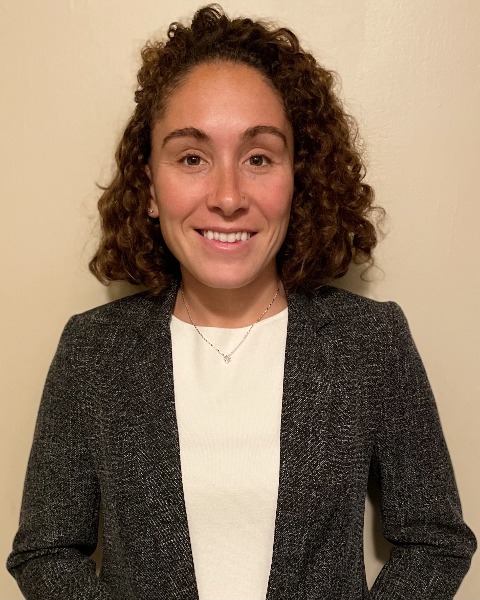Tuesday Poster Session
Category: Interventional Endoscopy
P4549 - EUS Cholangiography-Assisted ERCP for Difficult Biliary Cannulation
Tuesday, October 29, 2024
10:30 AM - 4:00 PM ET
Location: Exhibit Hall E

Has Audio

Alexandra Davies, DO (she/her/hers)
McLaren Greater Lansing Hospital
Lansing, MI
Presenting Author(s)
Alexandra Davies, DO1, Jeremy Barber, DO2, Eugene Zolotarevsky, MD2
1McLaren Greater Lansing Hospital, Lansing, MI; 2Corewell Health, Grand Rapids, MI
Introduction: Roughly 350,000-500,000 endoscopic retrograde cholangiopancreatographies (ERCP) are currently performed in the United States annually, based on data from 2019, with the first ever being performed in 1968.1 Indications for ERCP most often times include choledocholithiasis, cholangitis, obstructive jaundice due to benign biliary strictures or malignancy, and bile leaks following cholecystectomy. In certain cases, biliary cannulation via typical sphincterotome technique is unable to be obtained, here we discuss such a case.
Case Description/Methods: A 76-year-old male presented with band-like abdominal pain, pyrexia, and elevated transaminases. Bloodwork revealed aspartate aminotransferase 114 IU/L, alanine aminotransferase 87 IU/L, alkaline phosphatase 78 IU/L, and total bilirubin 1.5 mg/dL. Magnetic resonance cholangiopancreatography demonstrated common bile duct (CBD) dilation to 13mm with central filling defect. ERCP was planned given concern for cholangitis. ERCP was unsuccessful due to a small ampullary orifice within a diverticulum, with difficult angulation and overlying folds. Subsequent plan was a rendezvous ERCP with interventional radiology, however decision was made to perform endoscopic ultrasound (EUS) cholangiography assisted ERCP. After bile aspiration, 35cc of contrast was injected into CBD using a 22-gauge EUS needle (Figure 1). ERCP was performed, with the use of EUS cholangiogram as a road map for biliary cannulation. CBD was cannulated using a traction sphincterotome with 260 cm x 0.035" straight guidewire. Distal CBD was shouldered and brushings obtained, a 10 mm x 6 cm fully covered metal stent was placed.
Discussion: EUS-guided cholangiopancreatography was first described in 1996.2 Current EUS-biliary drainage involves three techniques: anterograde, transluminal, and rendezvous.3 At our advanced endoscopy center, we describe a fourth approach: EUS cholangiography assisted traditional ERCP.
Cappell MS, Friedel D. Stricter national standards are required for credentialing of endoscopic-retrograde-cholangiopancreatography in the United States. World Journal of Gastroenterology. 2019;3468-3483.
Wiersema MJ, Sandusky D, Carr R, Wiersema LM, Erdel WC, Frederick PK. Endosonography-guided cholangiopancreatography. Gastrointestinal Endoscopy. 1996;102-106.
Shah RM, Tarnasky P, Kedia P. A review of endoscopic ultrasound guided endoscopic retrograde cholangiopancreatography techniques in patients with surgically altered anatomy. Translational Gastroenterology and Hepatology. 2018;90.

Disclosures:
Alexandra Davies, DO1, Jeremy Barber, DO2, Eugene Zolotarevsky, MD2. P4549 - EUS Cholangiography-Assisted ERCP for Difficult Biliary Cannulation, ACG 2024 Annual Scientific Meeting Abstracts. Philadelphia, PA: American College of Gastroenterology.
1McLaren Greater Lansing Hospital, Lansing, MI; 2Corewell Health, Grand Rapids, MI
Introduction: Roughly 350,000-500,000 endoscopic retrograde cholangiopancreatographies (ERCP) are currently performed in the United States annually, based on data from 2019, with the first ever being performed in 1968.1 Indications for ERCP most often times include choledocholithiasis, cholangitis, obstructive jaundice due to benign biliary strictures or malignancy, and bile leaks following cholecystectomy. In certain cases, biliary cannulation via typical sphincterotome technique is unable to be obtained, here we discuss such a case.
Case Description/Methods: A 76-year-old male presented with band-like abdominal pain, pyrexia, and elevated transaminases. Bloodwork revealed aspartate aminotransferase 114 IU/L, alanine aminotransferase 87 IU/L, alkaline phosphatase 78 IU/L, and total bilirubin 1.5 mg/dL. Magnetic resonance cholangiopancreatography demonstrated common bile duct (CBD) dilation to 13mm with central filling defect. ERCP was planned given concern for cholangitis. ERCP was unsuccessful due to a small ampullary orifice within a diverticulum, with difficult angulation and overlying folds. Subsequent plan was a rendezvous ERCP with interventional radiology, however decision was made to perform endoscopic ultrasound (EUS) cholangiography assisted ERCP. After bile aspiration, 35cc of contrast was injected into CBD using a 22-gauge EUS needle (Figure 1). ERCP was performed, with the use of EUS cholangiogram as a road map for biliary cannulation. CBD was cannulated using a traction sphincterotome with 260 cm x 0.035" straight guidewire. Distal CBD was shouldered and brushings obtained, a 10 mm x 6 cm fully covered metal stent was placed.
Discussion: EUS-guided cholangiopancreatography was first described in 1996.2 Current EUS-biliary drainage involves three techniques: anterograde, transluminal, and rendezvous.3 At our advanced endoscopy center, we describe a fourth approach: EUS cholangiography assisted traditional ERCP.
Cappell MS, Friedel D. Stricter national standards are required for credentialing of endoscopic-retrograde-cholangiopancreatography in the United States. World Journal of Gastroenterology. 2019;3468-3483.
Wiersema MJ, Sandusky D, Carr R, Wiersema LM, Erdel WC, Frederick PK. Endosonography-guided cholangiopancreatography. Gastrointestinal Endoscopy. 1996;102-106.
Shah RM, Tarnasky P, Kedia P. A review of endoscopic ultrasound guided endoscopic retrograde cholangiopancreatography techniques in patients with surgically altered anatomy. Translational Gastroenterology and Hepatology. 2018;90.

Figure: Figure 1: EUS Cholangiogram
Disclosures:
Alexandra Davies indicated no relevant financial relationships.
Jeremy Barber indicated no relevant financial relationships.
Eugene Zolotarevsky indicated no relevant financial relationships.
Alexandra Davies, DO1, Jeremy Barber, DO2, Eugene Zolotarevsky, MD2. P4549 - EUS Cholangiography-Assisted ERCP for Difficult Biliary Cannulation, ACG 2024 Annual Scientific Meeting Abstracts. Philadelphia, PA: American College of Gastroenterology.
